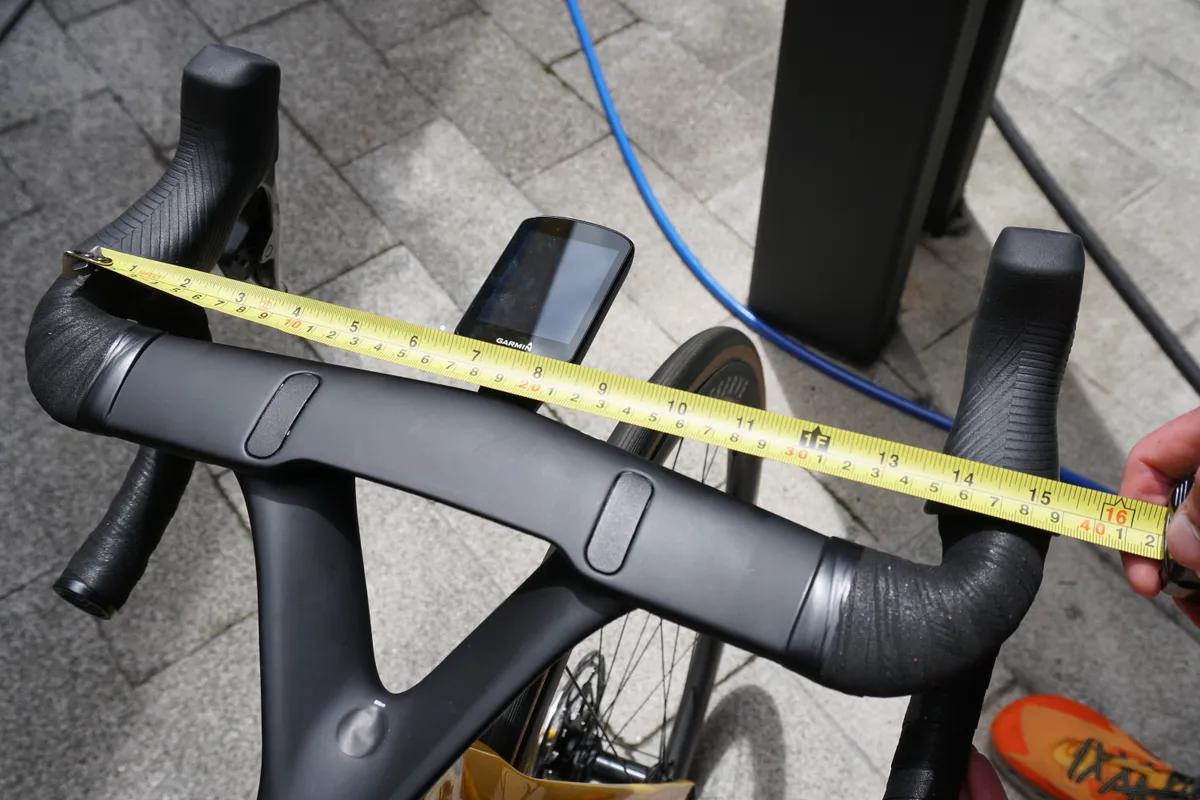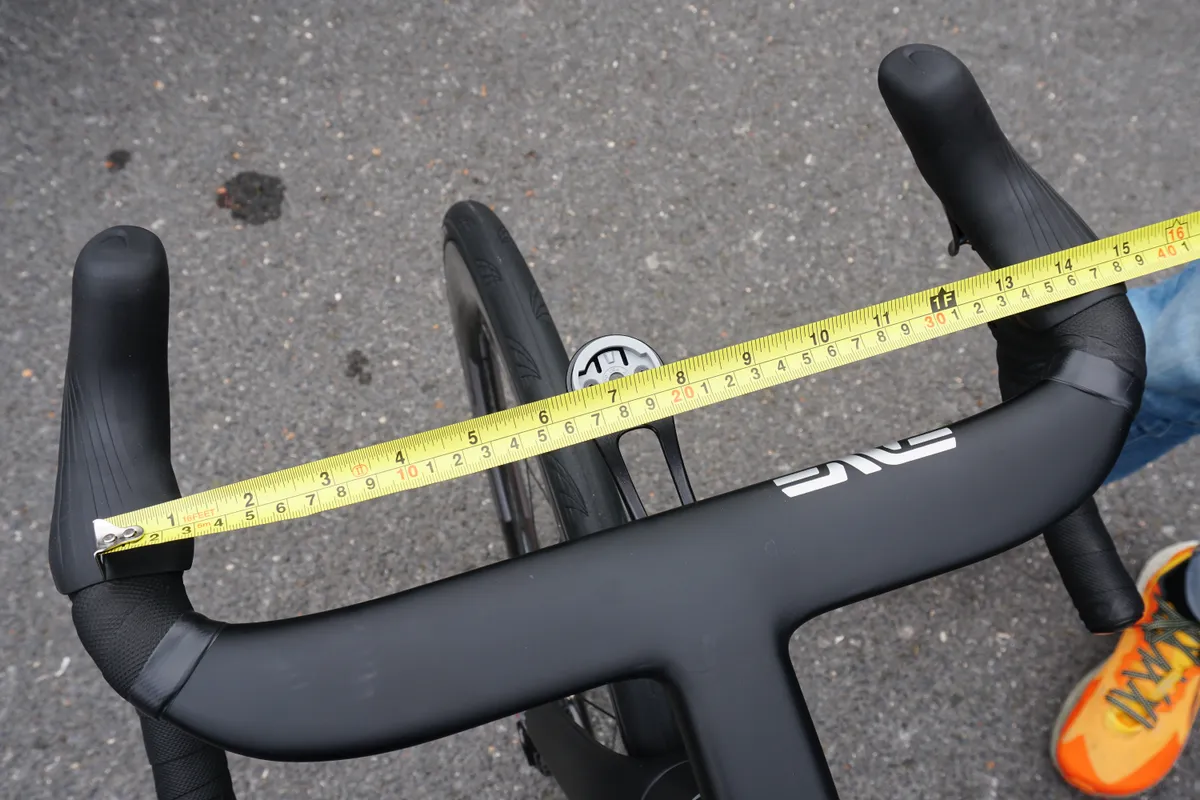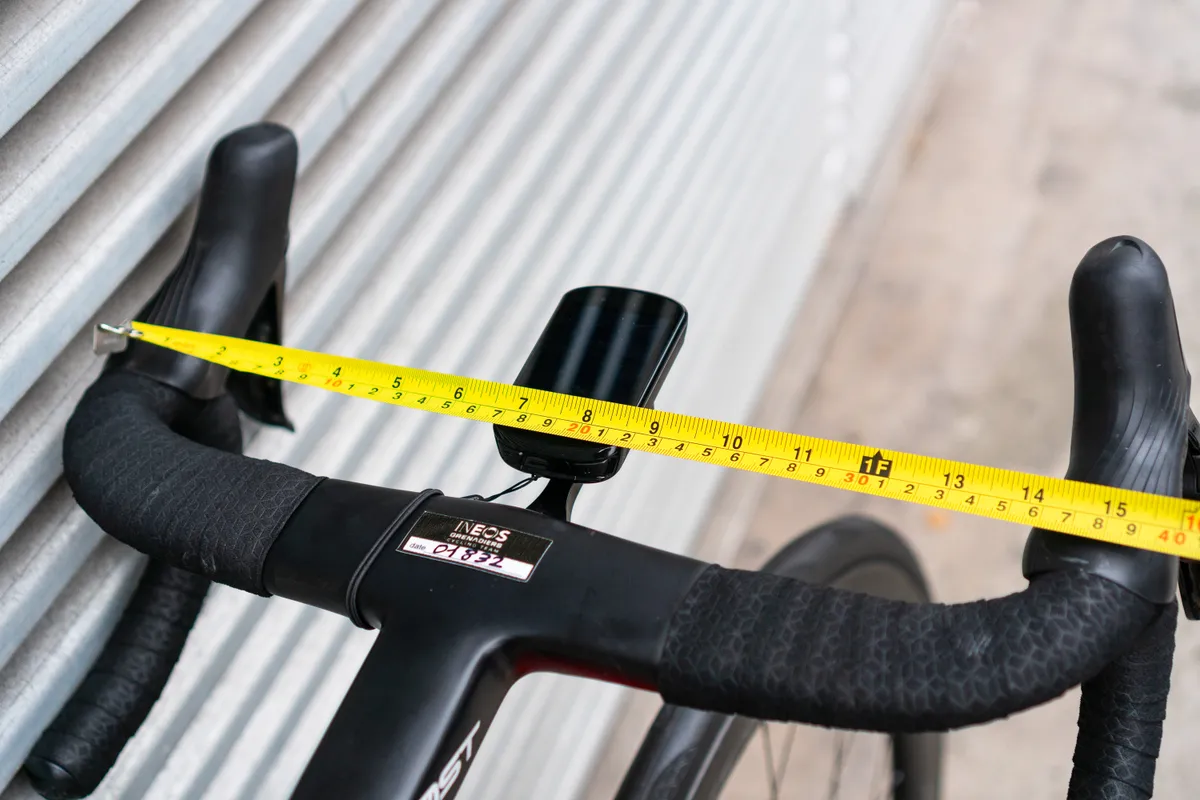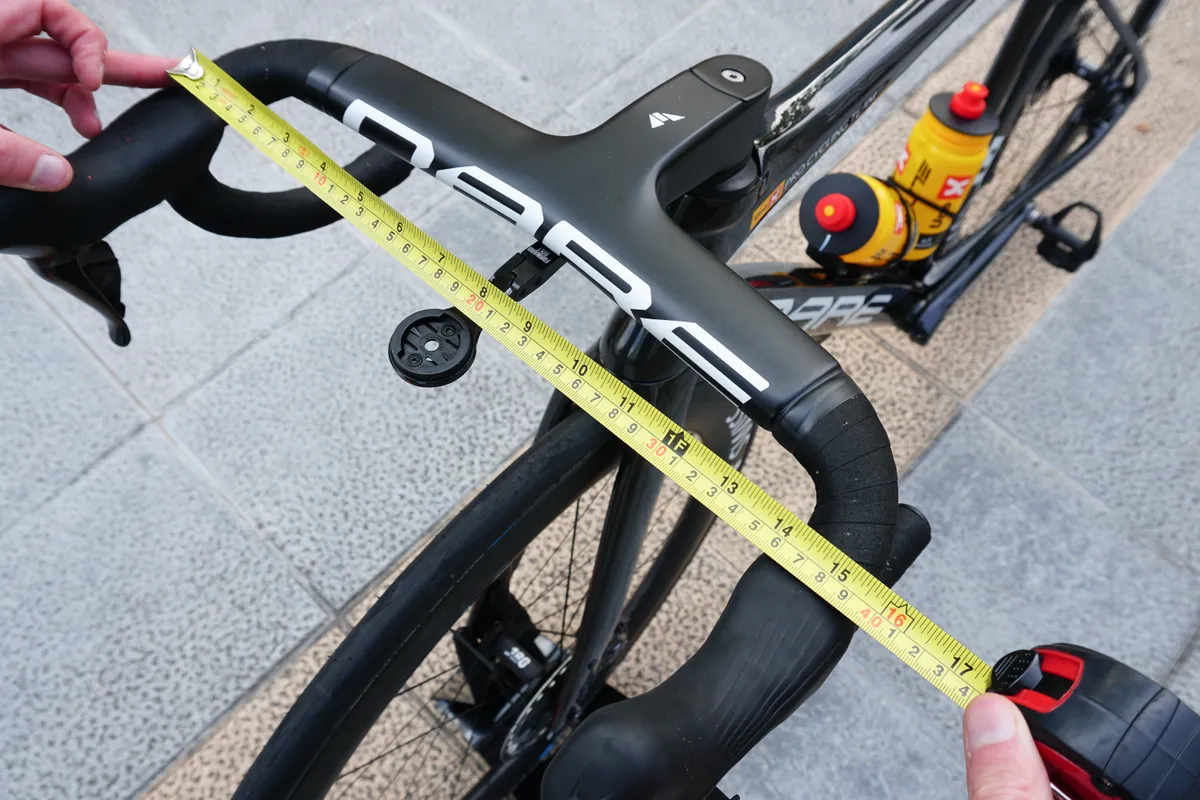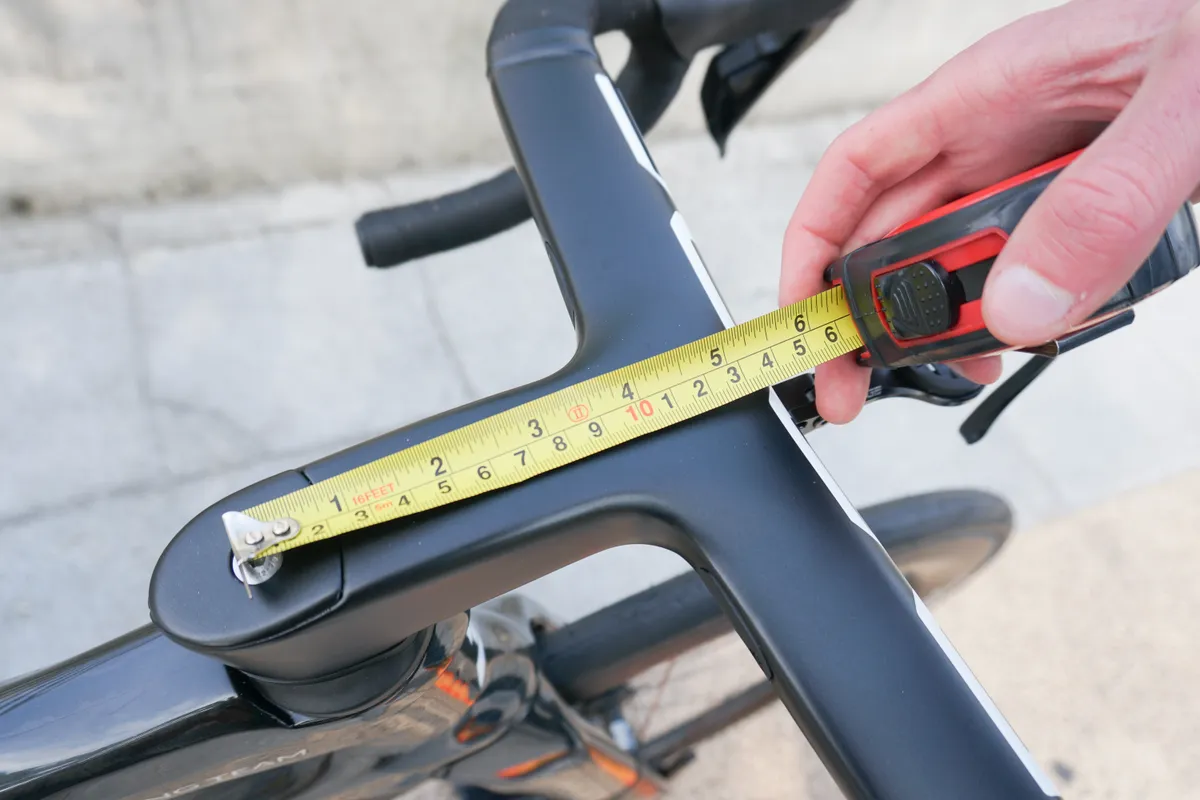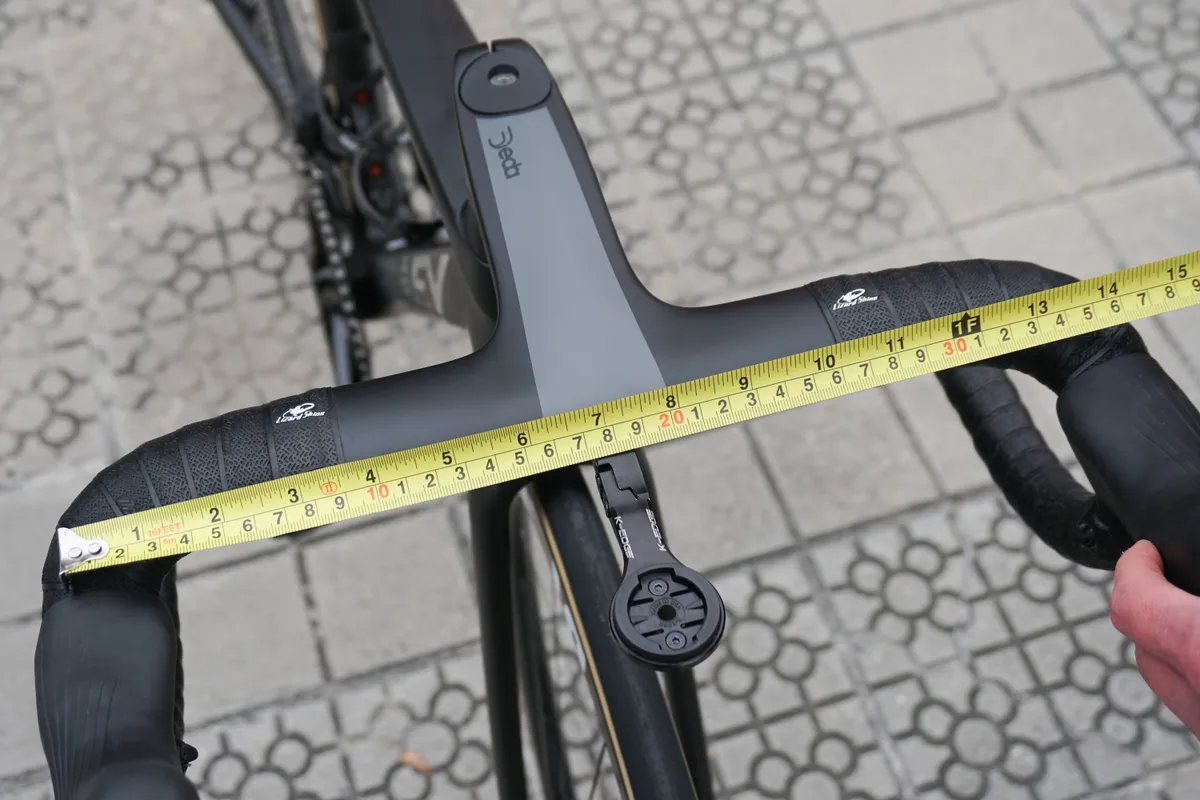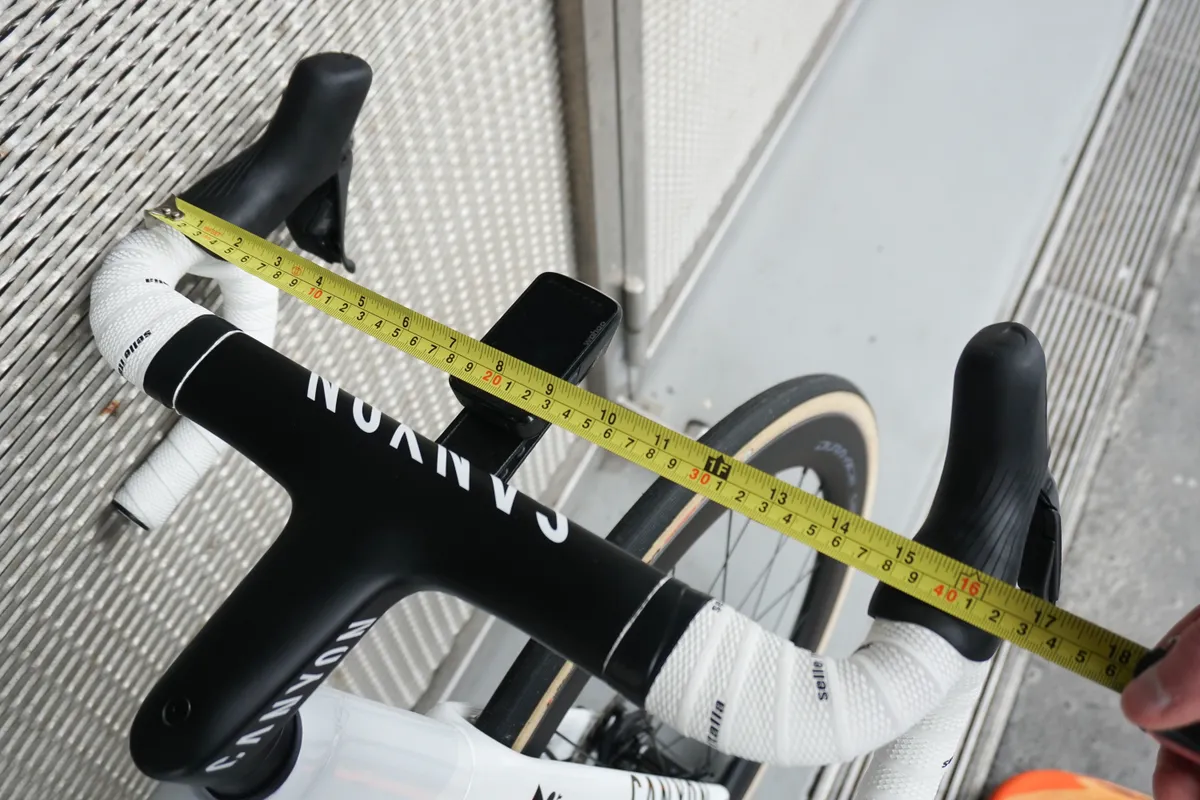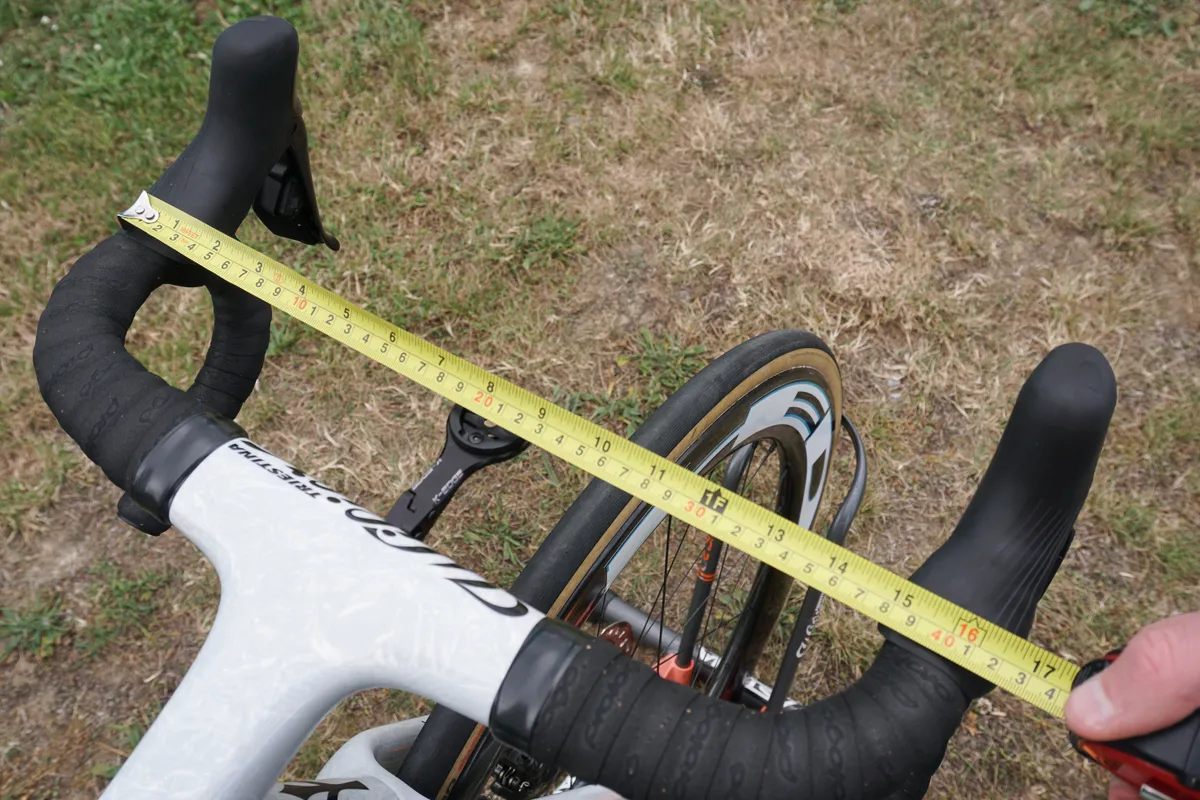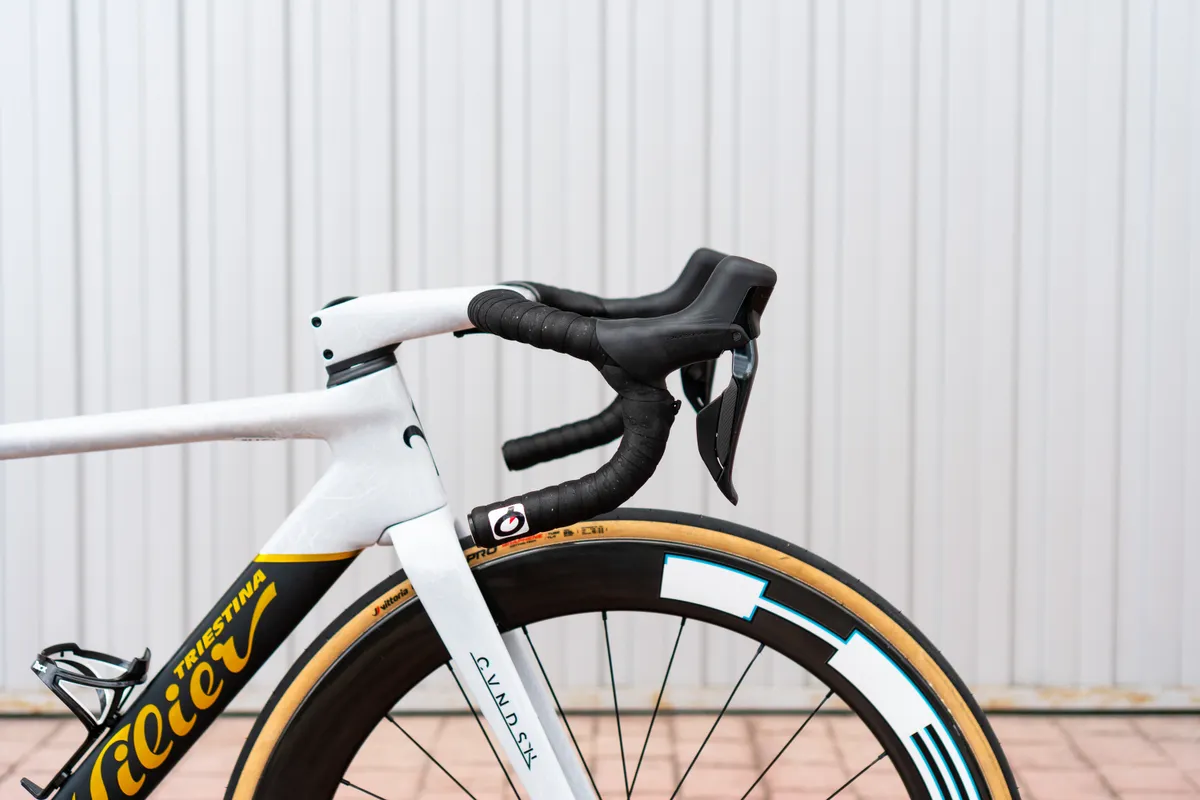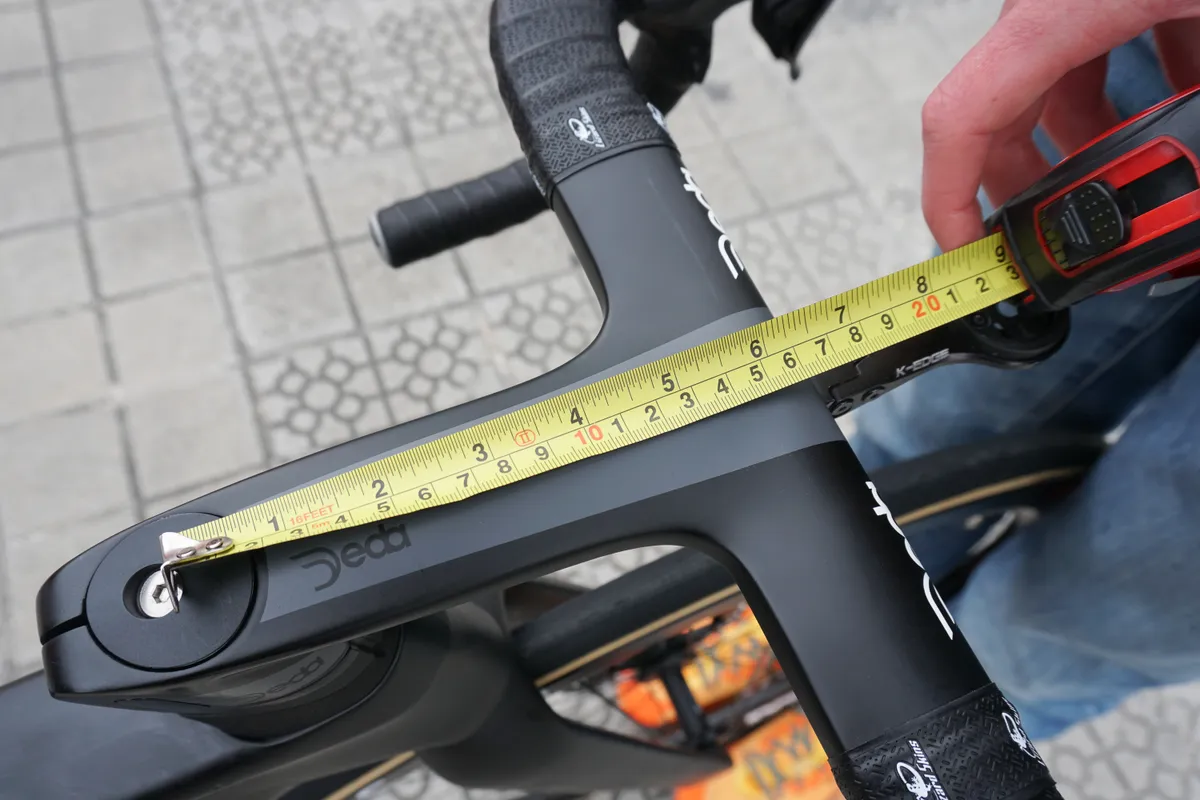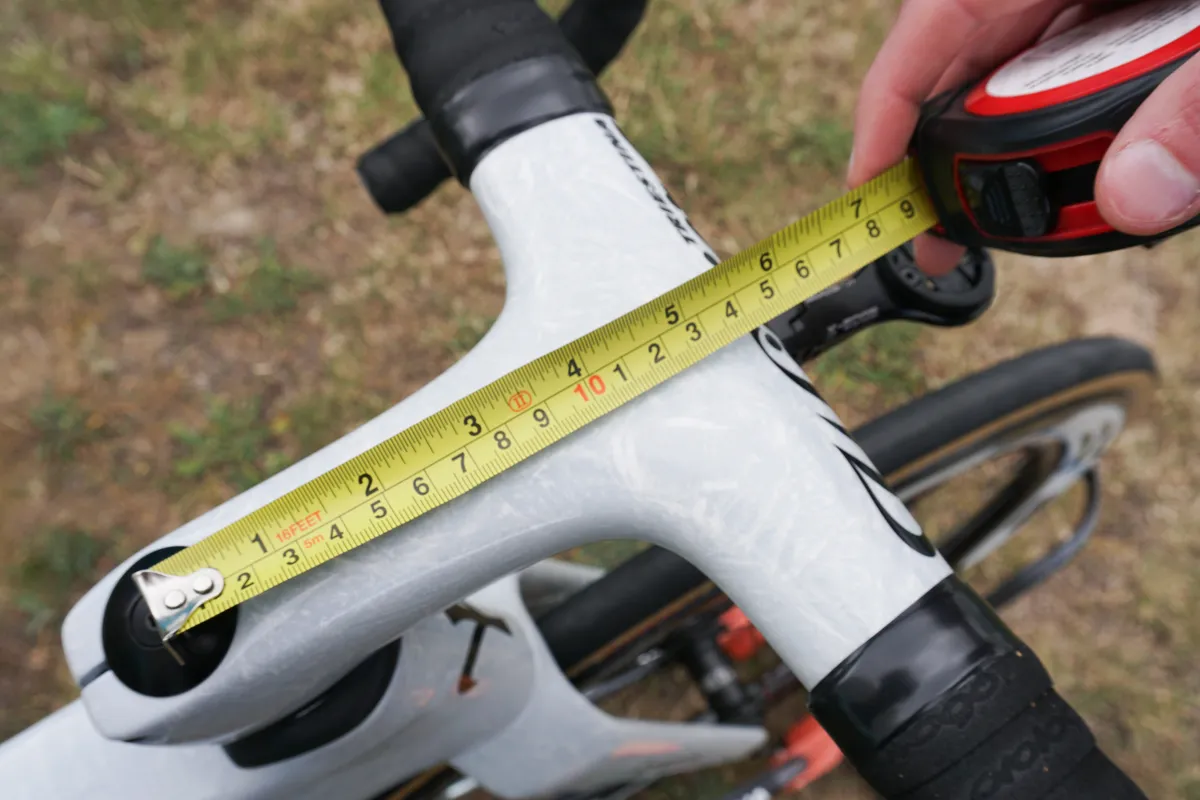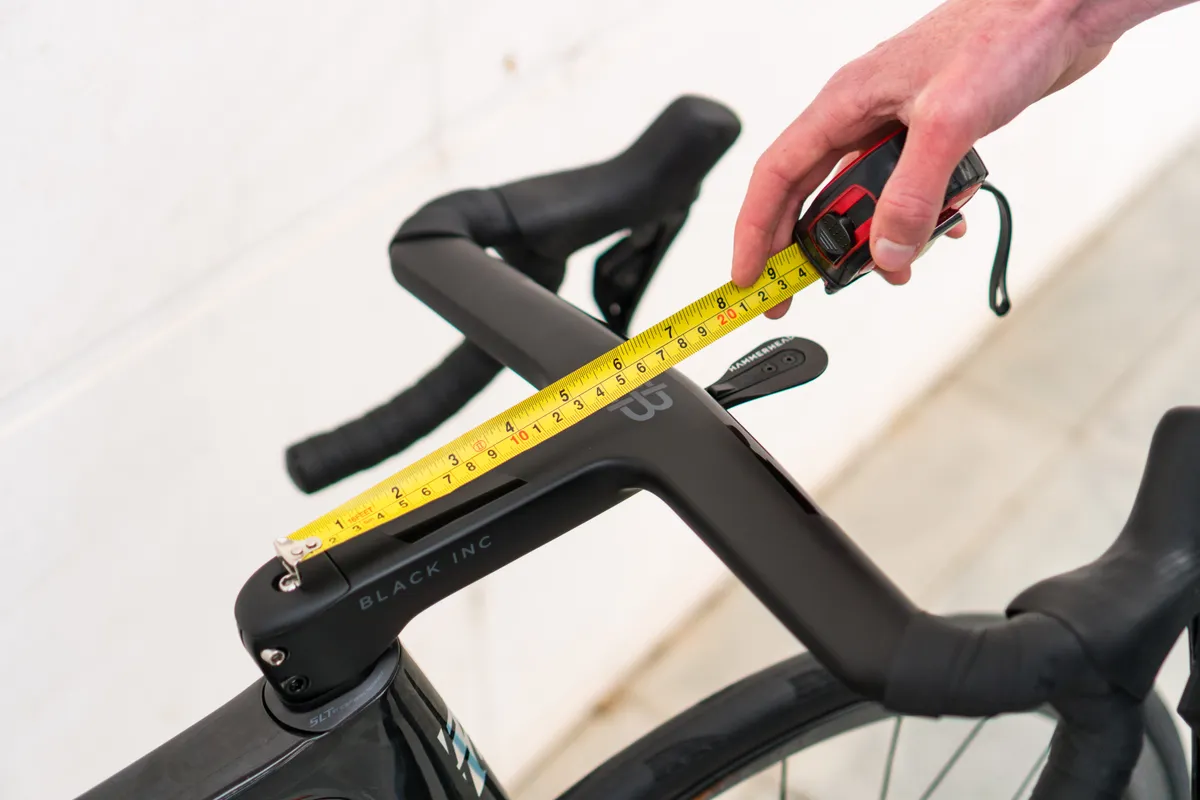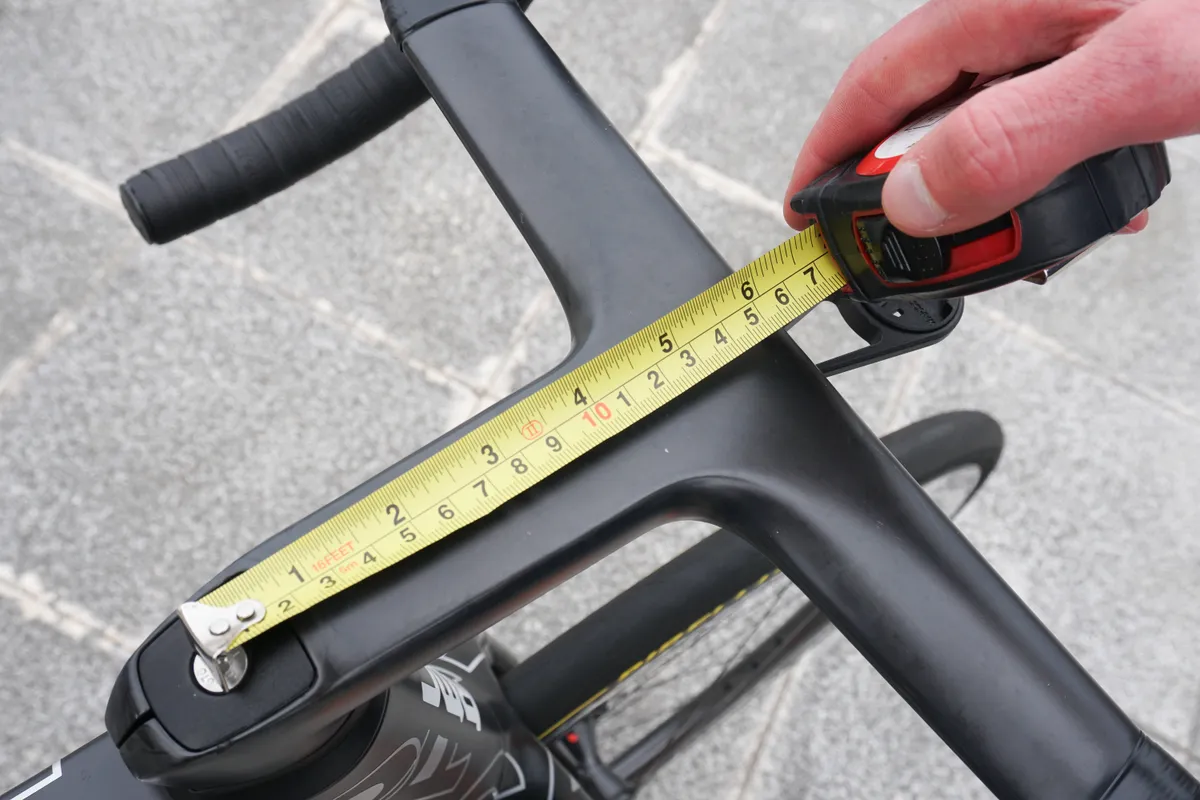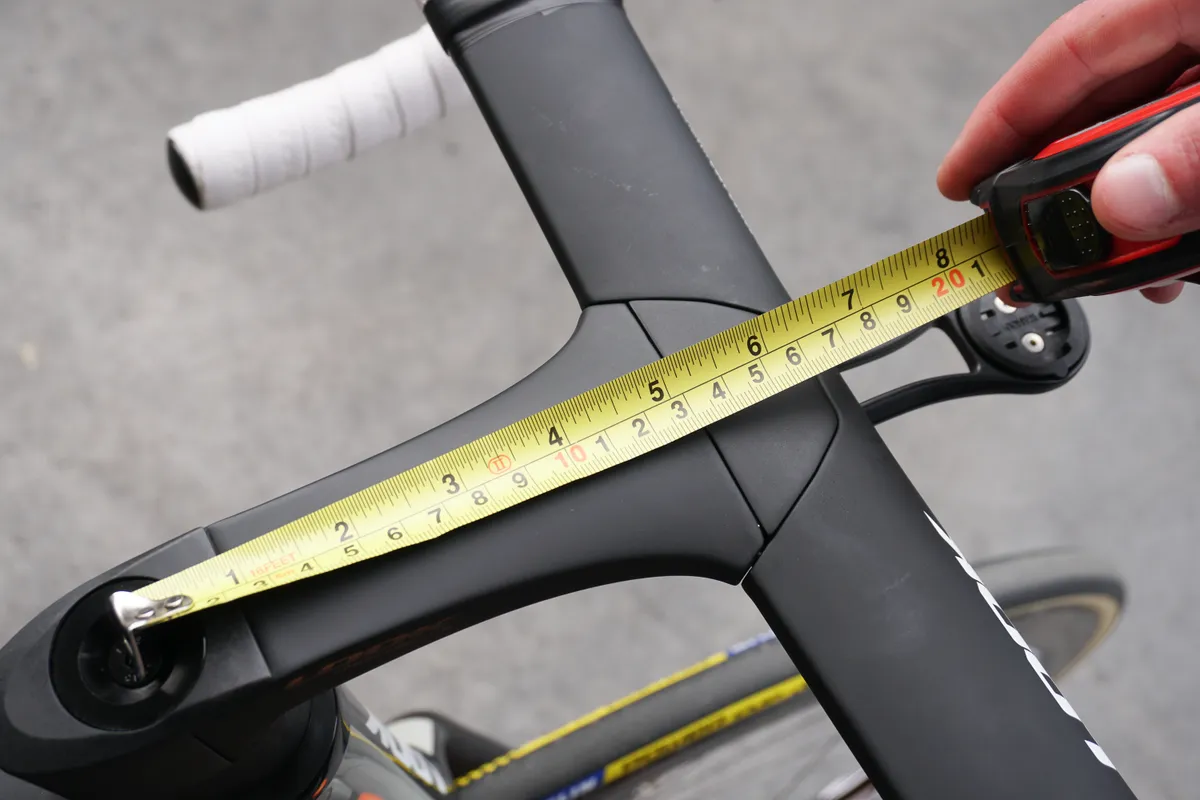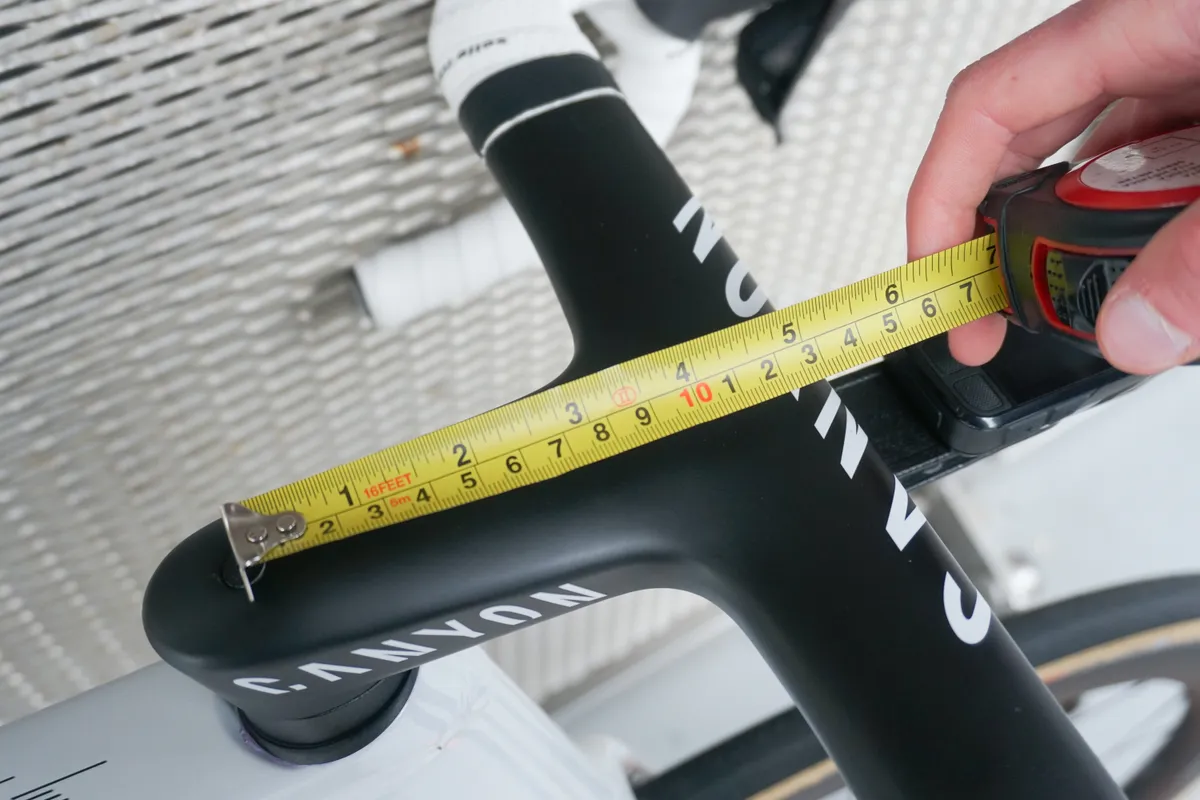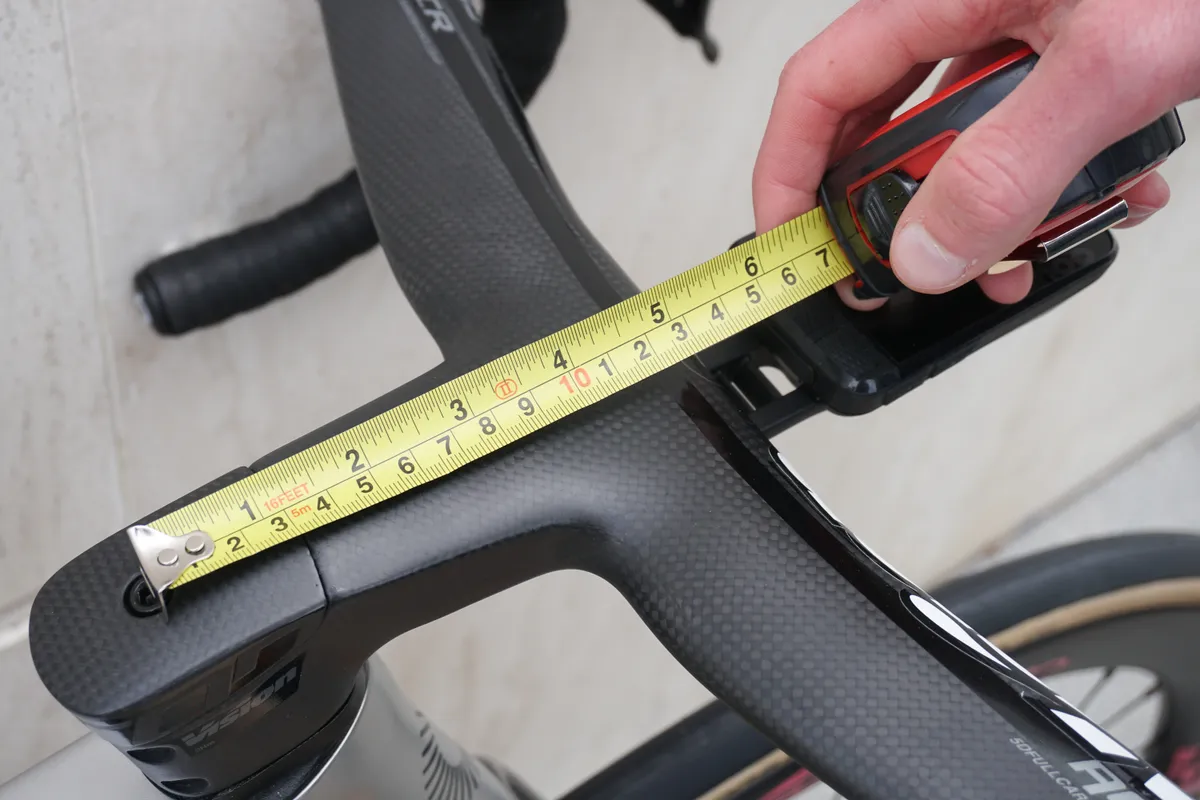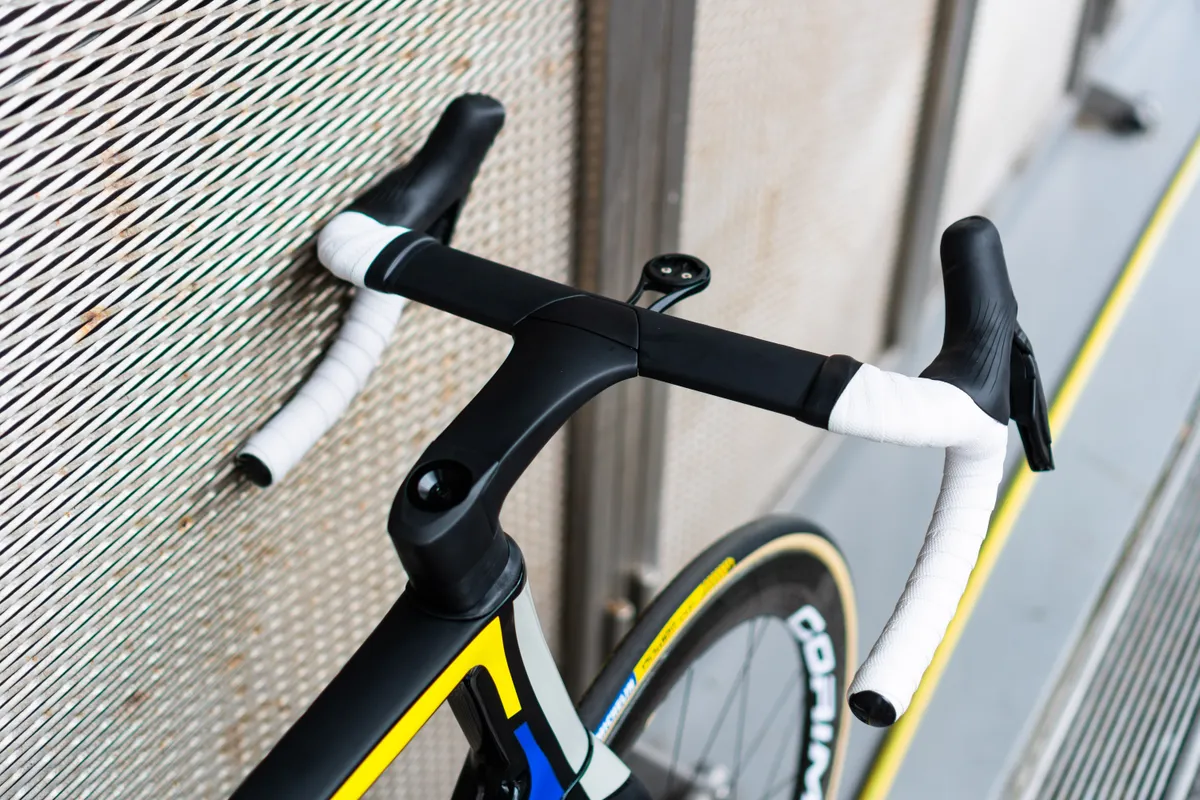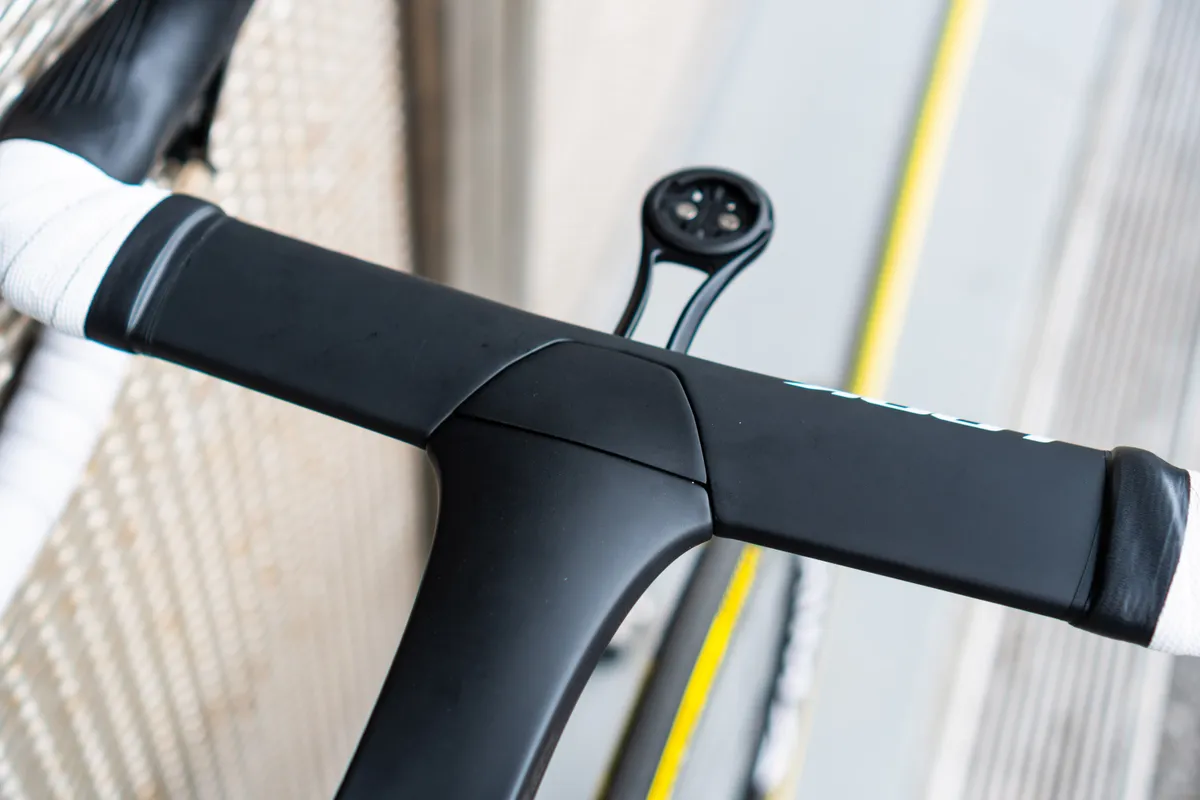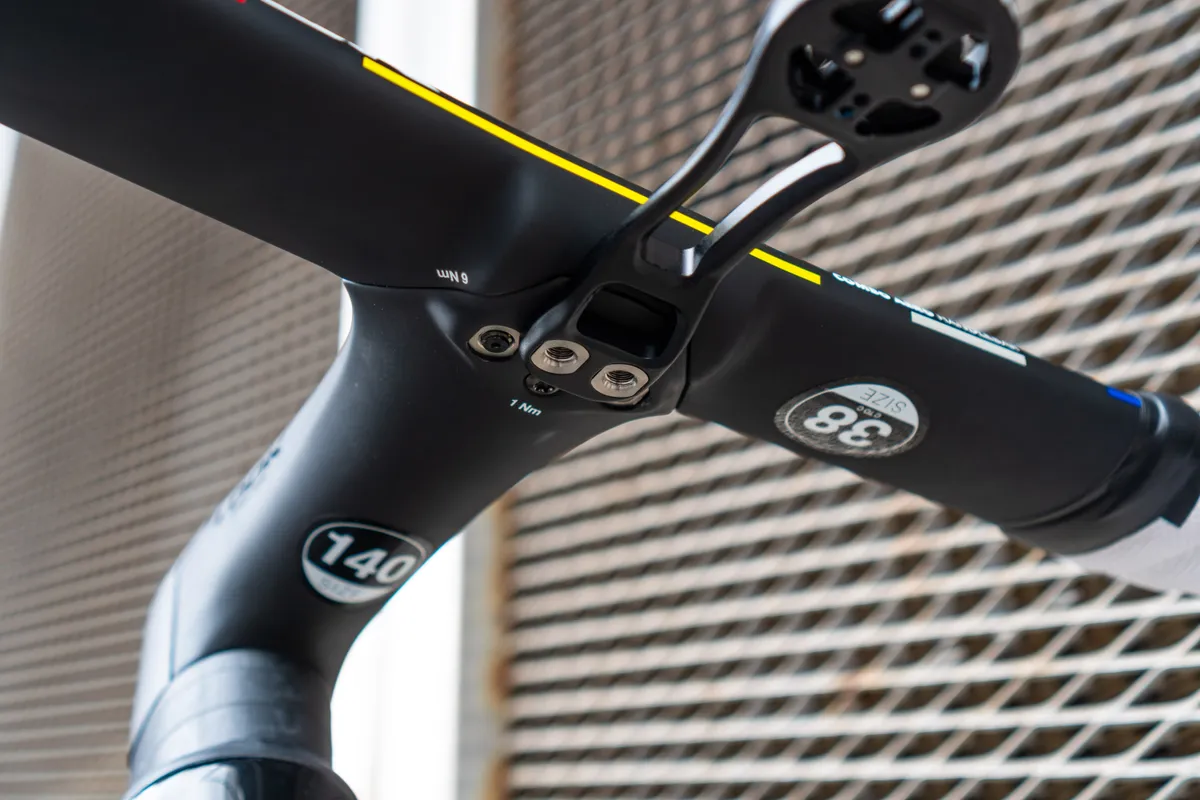If you were paying attention to our tech coverage of this year’s Tour de France, you may have noticed more riders than ever are adopting extreme cockpit setups.
While much of the talk at this year’s race has been of 1x drivetrains, wide tubeless tyres and riders switching to (slightly) lighter bikes, it’s easy to overlook the changing nature of pro front ends.
Pro riders are often cited as being fairly conservative when it comes to new bike tech, but preferences on handlebar widths appear to have shifted rapidly in recent years.
So, with the dust settling on another Tour de France, let’s take a look at the front-end setups of some of the biggest names in the bunch, and consider what they might tell us about where things are heading with road handlebars.
Have the pros been reading my articles?
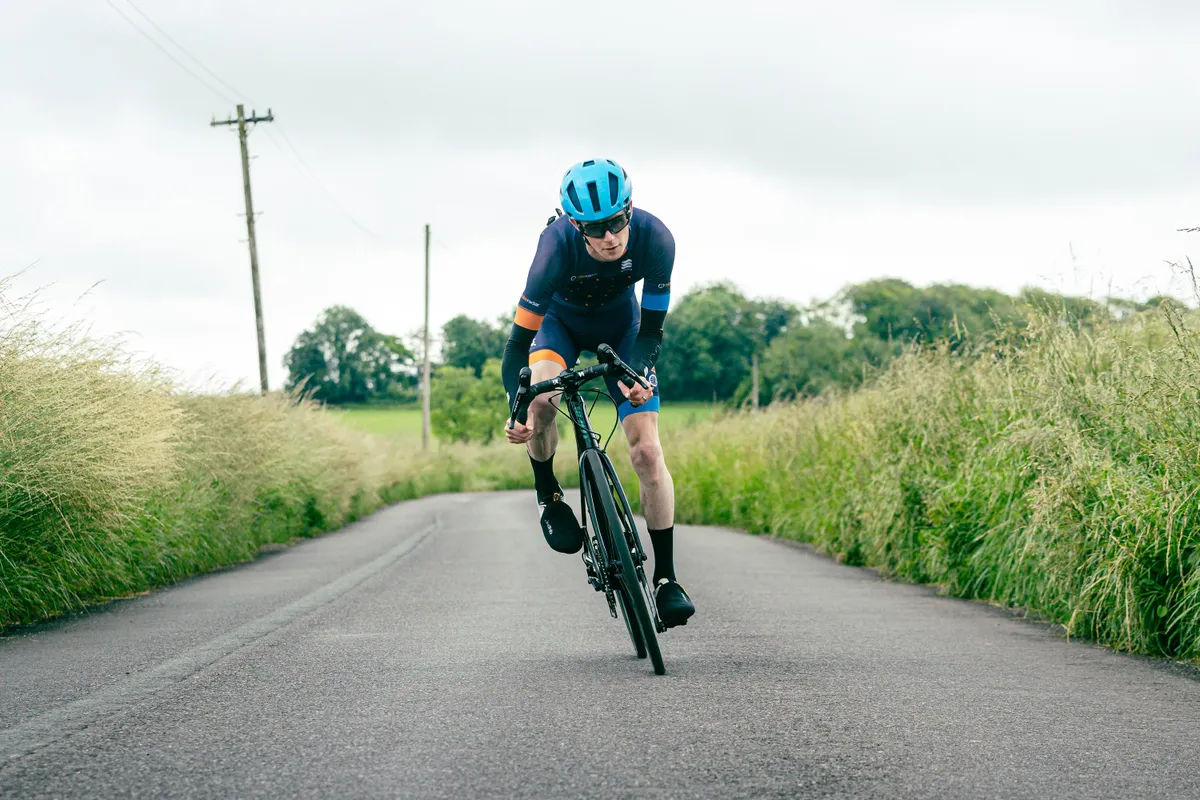
Given the frequency and volume with which I’ve evangelised about the benefits of narrow handlebars, it’s tempting to wonder if the pros have been frequenting leading multi-discipline cycling website BikeRadar in recent years.
While I hope they have, it’s more likely they’ve instead been paying attention to the growing number of performance engineers and consultants many pro teams now employ.
The likes of Dan Bigham (performance engineer at Team Ineos-Grenadiers), Dr Ciarán O’Grady (performance coach at Israel-PremierTech) and Casper von Folsach (performance coach at Team Uno-X), for example, are tasked with helping riders be as fast as possible on the bike.
Typically, these roles encompass overseeing a broad spectrum of rider performance, from training, recovery and nutrition, through to optimising equipment and working with team sponsors to develop new products.
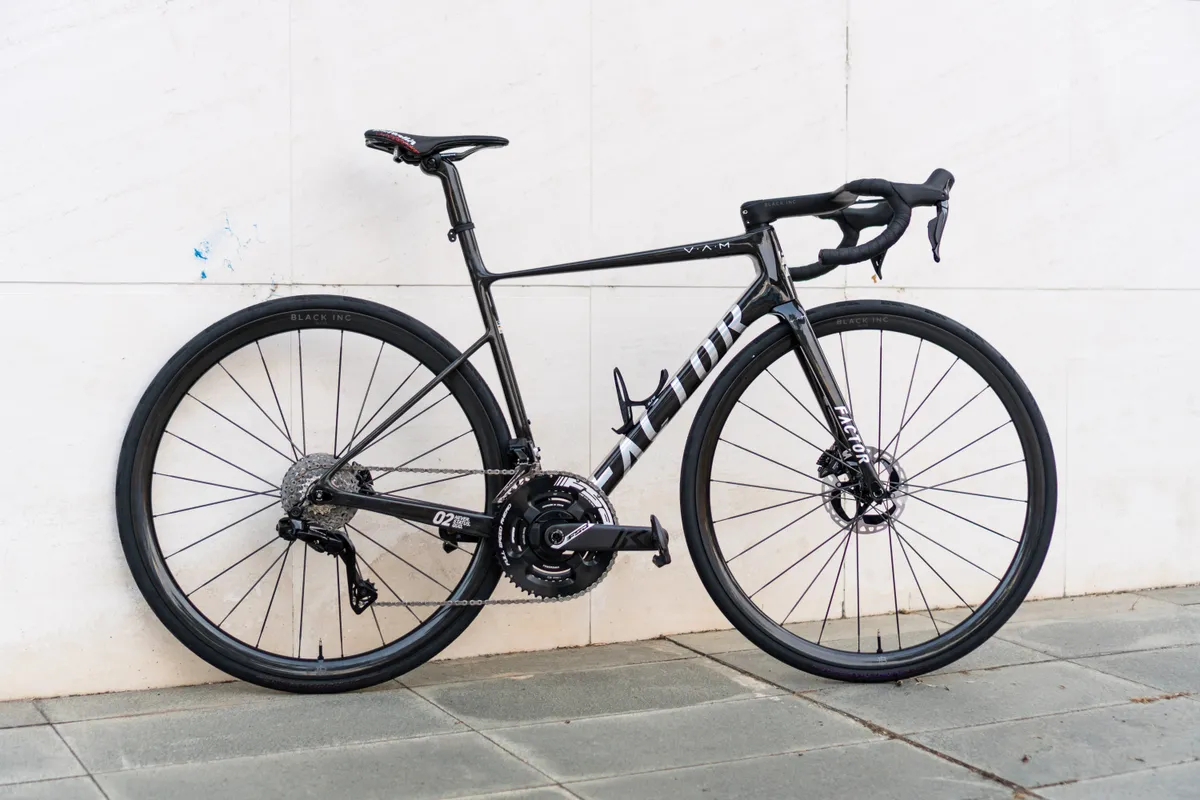
With narrow handlebars having become mainstream in track cycling in recent years (they were a key trend at the Tokyo 2020 Olympics, for example), it’s no surprise to see the likes of Bigham and Folsach – both of whom were previously involved with the Danish Olympic track cycling team – bringing these ideas into road racing.
While the demands of road racing are undoubtedly different from those of track racing, the desire to ride as fast as possible crosses over neatly, after all.
And with experts such as Dr Xavier Disley of AeroCoach saying the savings amount to around 2 watts per 10mm narrower you go (according to his testing at 45kph), it’s clear there were some easy gains available for many riders.
Cockpit setups at the 2023 Tour de France
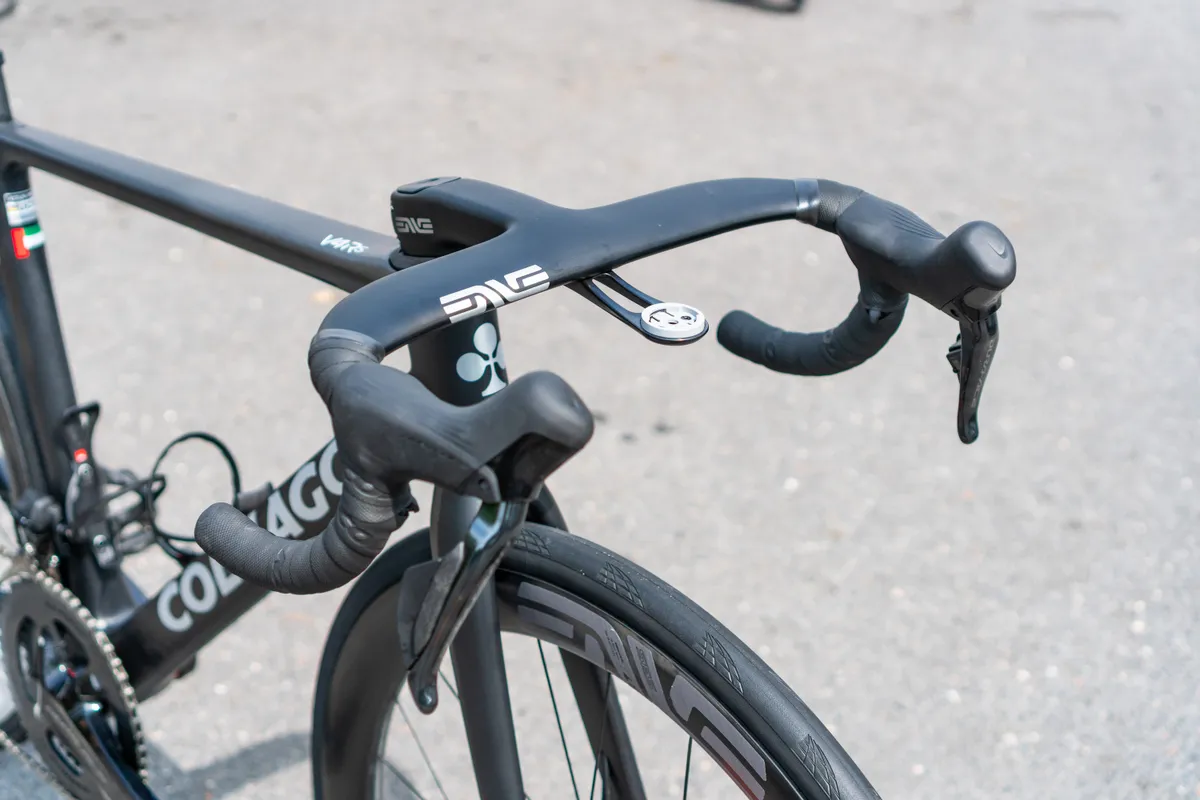
Just as with last year's race, there appears to have been a clear trend towards long and narrow cockpit setups within the pro peloton.
In fact, the most common handlebar widths we saw were 36cm and 38cm.
There didn’t appear to be a correlation between rider height and bar width, either, as we see with bikes sold to consumers (where bar width typically increases according to frame size).
Narrow bars dominate
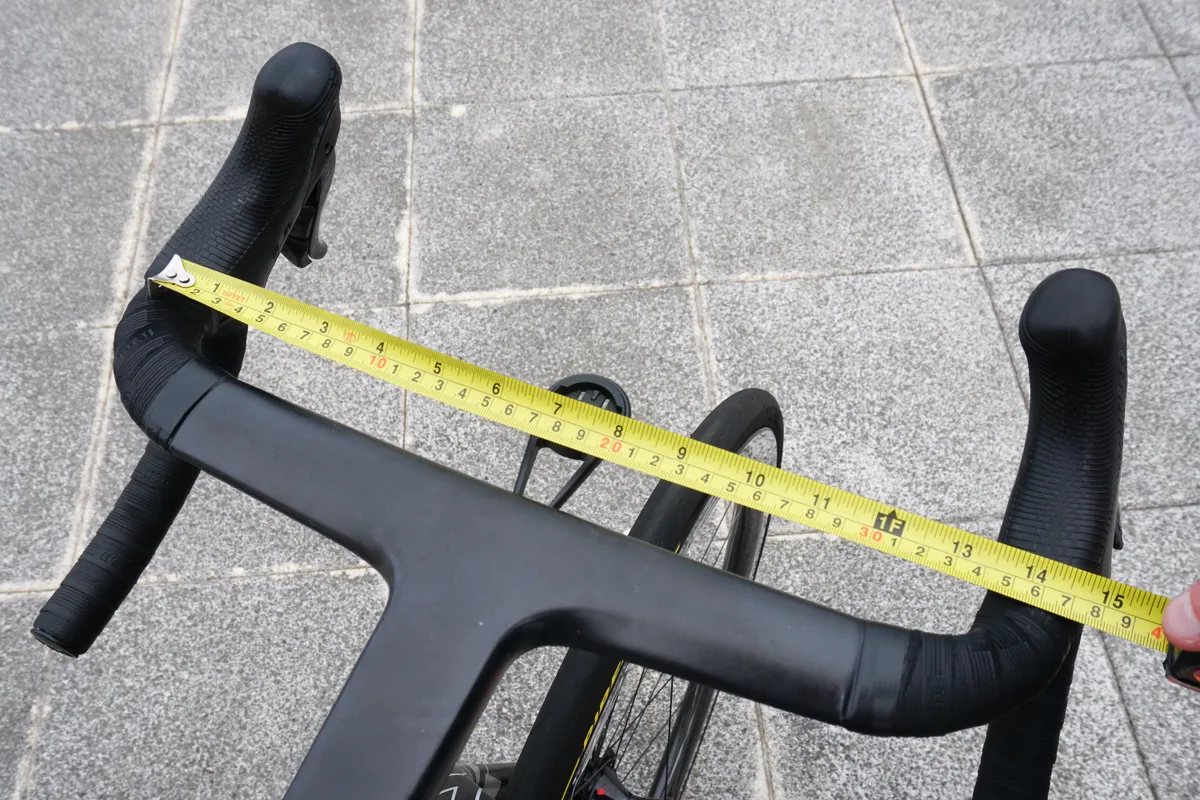
AG2R-Citroen’s 1.88m-tall GC rider, Ben O’Connor, for example had a 36cm-wide handlebar paired with a 140mm stem on his prototype BMC aero bike.
Alexis Renard, of Cofidis, also relatively tall at 1.84m, was using a 38cm-wide handlebar paired with a 140mm stem on his new Look 795 Blade RS.
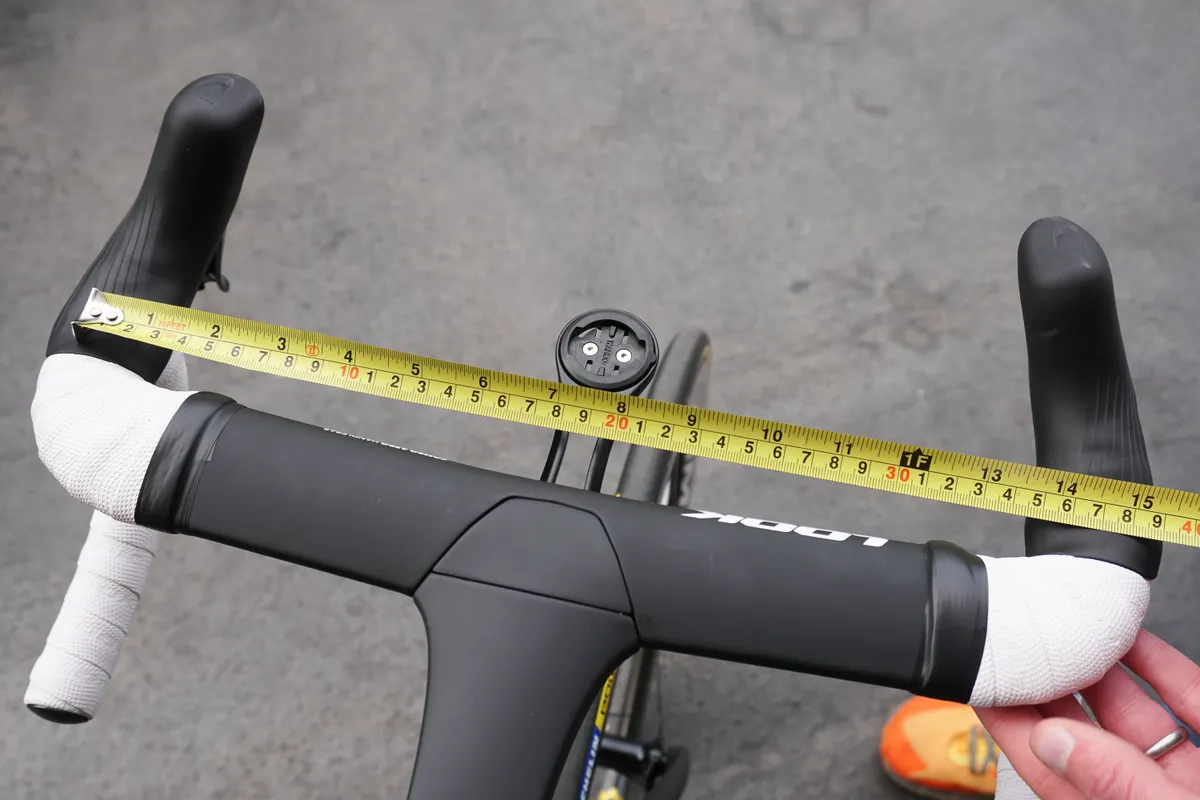
It’s often claimed wider bars are useful for increasing leverage when climbing or sprinting, but some of the star names at this year's race don’t appear to mind the potential trade-off.
Yellow jersey winner, Jonas Vingegaard (Jumbo–Visma), and his great rival Tadej Pogačar (UAE–Team Emirates), had 38cm-wide and 36cm-wide handlebars on their respective bikes, for example.
Egan Bernal (Team Ineos–Grenadiers) and Richard Carapaz (EF Education–EasyPost) were also both using 38cm-wide handlebars.
Uno-X Pro Cycling’s sprinter, Alexander Kristoff, was also running a 38cm-wide handlebar, paired with a 120mm stem, while Lotto-Dstny’s Caleb Ewan had a 36cm-wide bar.
For these riders, the improved aerodynamics of a reduced frontal area, coupled with the ability to more easily manoeuvre through the bunch, will likely be the primary motivations for opting for a narrower bar.
While we saw one 42cm-wide handlebar at last year’s race (on Chris Juul-Jensen’s Giant Propel Advanced SL), this year we didn’t see anything wider than 40cm.
The 40cm bars we did see belonged to Mark Cavendish of Astana–Qazaqstan, one of the veterans of the bunch, and Mathieu van der Poel of Alpecin–Deceuninck.
As many other riders now do, van der Poel tilts his brake hoods in slightly for a narrower effective hand position at the hoods.
Of course, we didn’t measure every bike in the bunch, so this doesn’t mean 42cm (or wider) handlebars have disappeared completely from the pro peloton. They aren’t being used by many of the big names in the bunch anymore, though.
Long stems for life
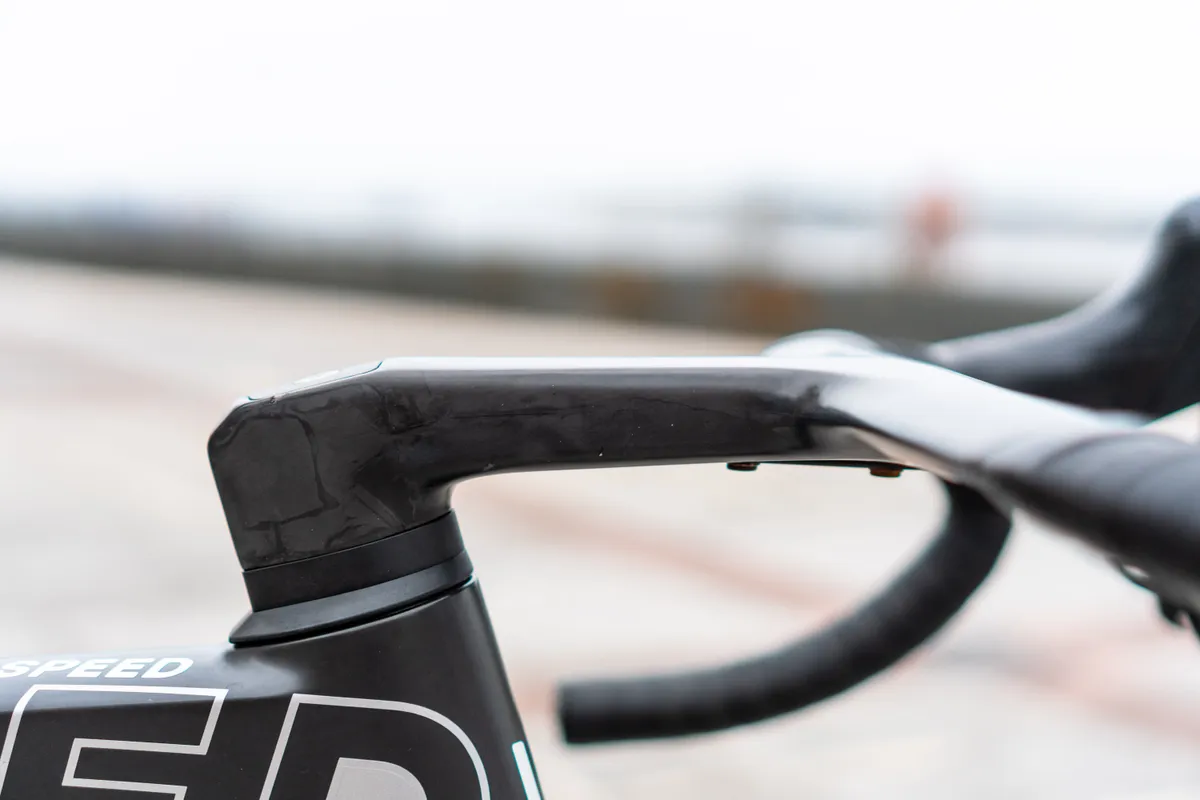
Rangy stems, which help riders get stretched out and adopt more aerodynamic riding positions, were also ubiquitous, even on the bikes of shorter riders. No change there, then.
Despite being the second shortest rider in the race, at 1.65m-tall, Caleb Ewan uses a 140mm-long stem.
Cavendish, at 1.75m-tall, used a 130mm stem.
Taller riders in the bunch were also invariably using long stems, with O’Connor and Renard selecting 140mm options.
The BikeRadar award for the Longest Stem at the 2023 Tour de France goes to Israel-Premier Tech’s Simon Clarke, who had an enormous, 150mm-long example on his new Factor 02 VAM.
Paired with a 38cm-wide handlebar, that’s a very pro setup – long and narrow.
Stem lengths of 140mm and 150mm are rarely (if ever) specced on even the largest bikes sold to consumers.
In contrast, the shortest stems we saw were around 110mm – ‘short’ only by pro cyclist standards, because it's a fairly standard length for a size-large road bike.
Despite their differing statures, both Carapaz (1.70m) and van der Poel (1.84m) had 110mm-long stems on their bikes.
For van der Poel, that 110mm stem, combined with his 40cm-wide bar, means the Dutch superstar had the kind of setup you could see on a weekend bunch ride. Not every rider has an extreme, pro-only cockpit.
Integration is now the norm
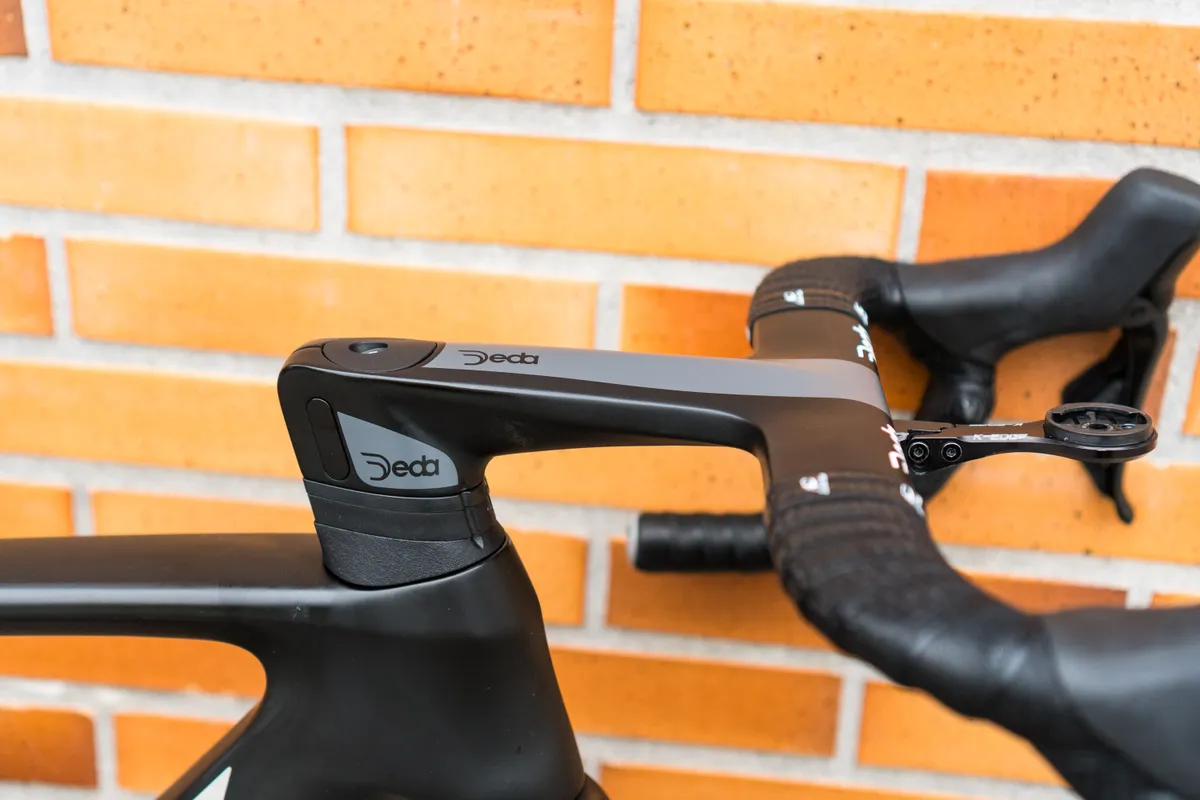
While it was no surprise to see fully integrated cockpits on the aero road bikes used at last year’s Grand Départ, one-piece setups have now colonised almost every bike in the peloton.
In contrast, two-piece front ends were rare.
The Specialized S-Works Tarmac SL7, Giant Propel Advanced SL and Look 795 Blade RS were the only bikes on show with such setups, and there are even caveats there.
A few Specialized-sponsored riders were running Roval’s new Rapide integrated cockpit at this year’s race (a handlebar we believe may form part of the Specialized Tarmac SL8, at some point in the near future), for example.
The recently launched Look all-rounder also uses a proprietary stem and handlebar, which though separate to allow for sizing swaps, integrate together exceptionally cleanly.
Bikes with exposed cables, however, such as the venerable Giant TCR – once considered among the most radical bikes in the peloton – were nowhere to be seen at this year’s Tour.
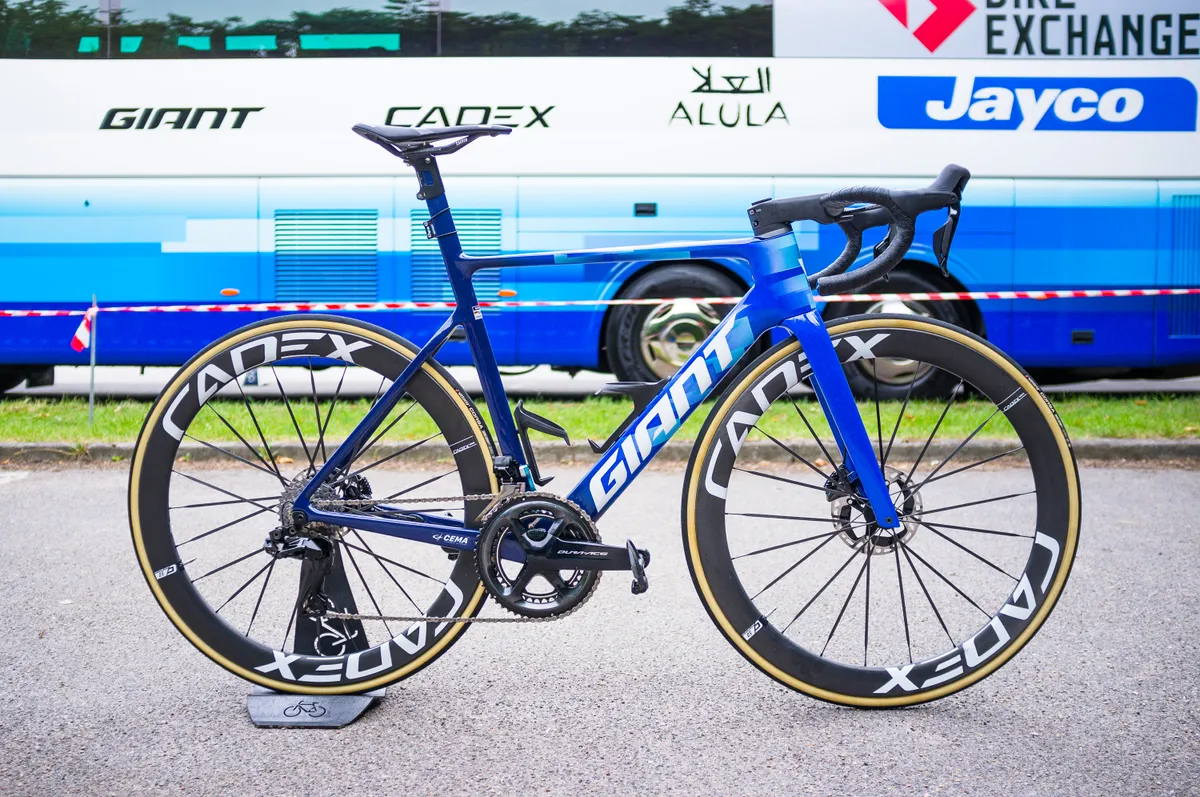
Is this the end of the road for the Giant TCR? Unless Giant updates it with fully integrated cables, or the UCI lowers its minimum bike weight limit, we may have seen the last of this iconic bike at the Tour.
With the latest Giant Propel ticking both the lightweight and aero boxes, and flirting with the current UCI weight limit of 6.8kg, could Giant reposition the TCR in a similar role – too light for the pros – to the Specialized S-Works Aethos?
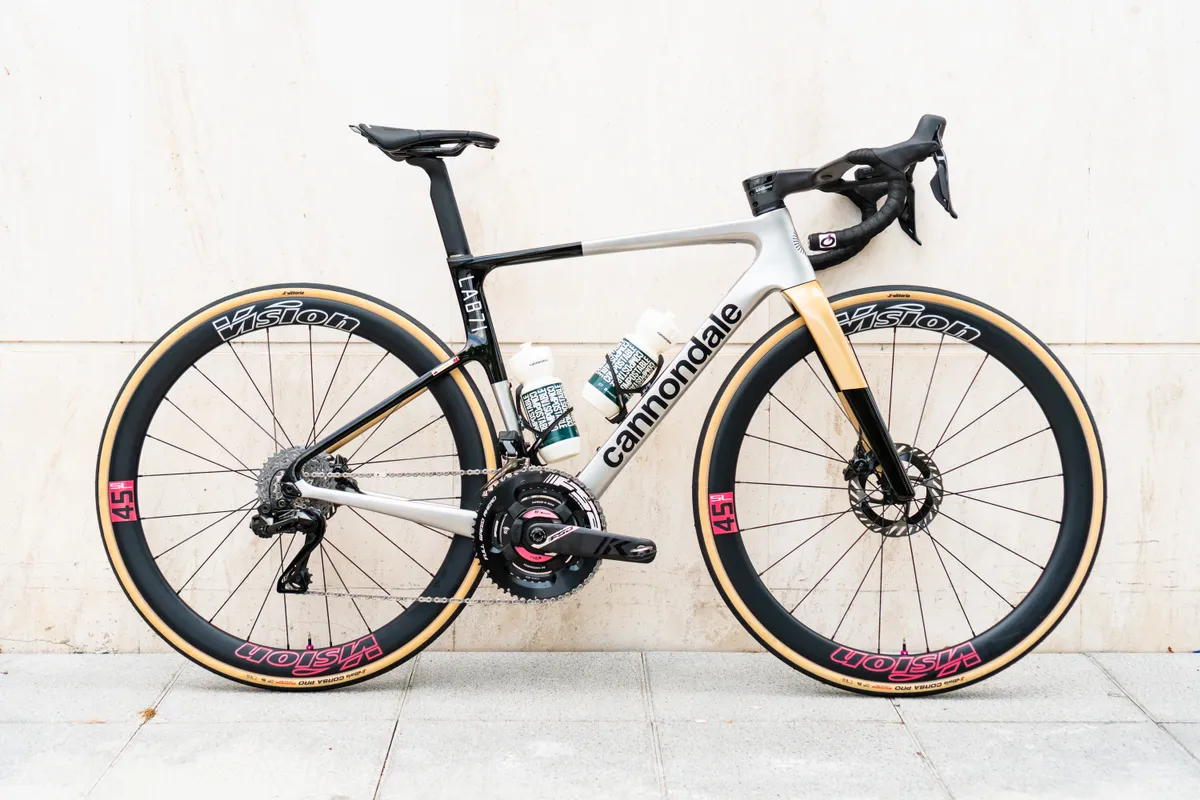
Of course, many of the bikes used by Tour pros, such as the Cannondale SuperSix Evo, Pinarello Dogma F, Colnago V4Rs and more, are compatible with both integrated cockpits and non-integrated options.
This is handy, because integrated cockpits can make optimising a bike fit tricky and/or expensive for everyday riders.
With a range of options to choose from, and a fleet of professional mechanics at their service, that’s not something your average Tour racer needs to worry about, however.
Where do we go from here?
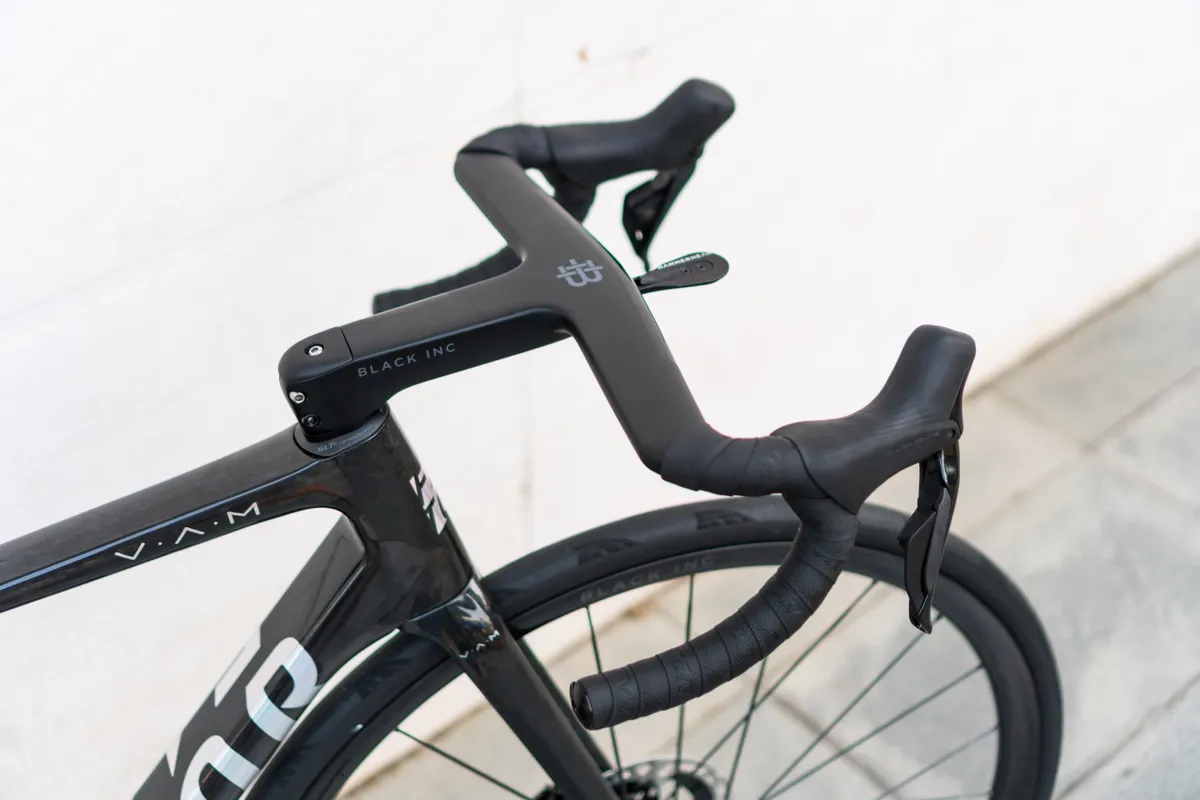
Considering the pace with which the 42cm-wide handlebar appears to have been abandoned, the question remains – have we reached peak narrow handlebars?
Given quite a few riders were running 36cm-wide bars at this year’s race, it might be tempting to conclude that we’re nearly there.
After all, that’s only 1cm off the recently mandated, UCI minimum handlebar width of 35cm for road racing.
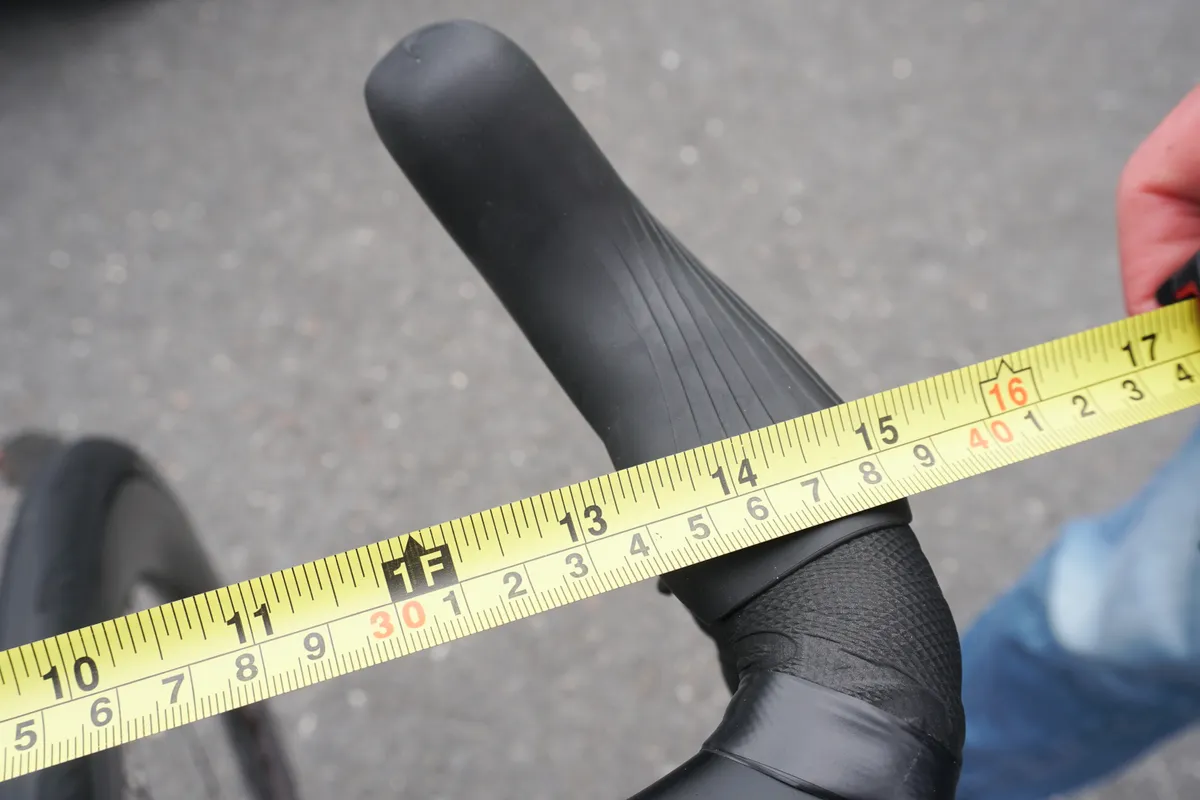
However, as we noted at the time of the rule’s introduction, this regulation leaves room for brands and riders to push the envelope even further.
A handlebar needs only to be 35cm wide outside-to-outside, which leaves the possibility to have a flared handlebar with 35cm-wide drops, but a much narrower position at the brake hoods.
Notably, a few brands are already taking advantage of this.
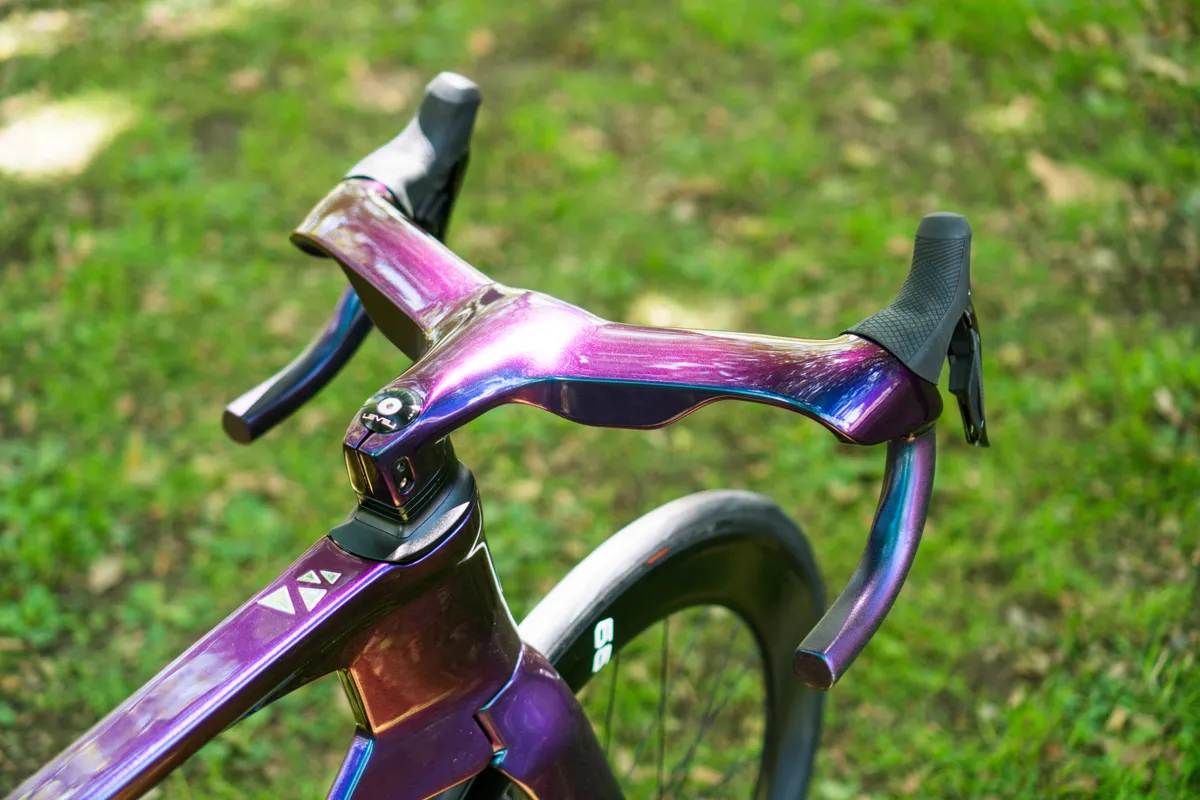
AeroCoach’s Ornix road handlebar, for example, measures 37.5cm wide at the drops, but just 32.5cm wide at the point where the shifters attach.
The Ribble Ultra SL R also has an option for its radical integrated handlebar with 37cm-wide drops and a 33cm-wide shifter position.
As you’d expect, both brands promise these handlebars offer significant performance advantages compared to more standard options.
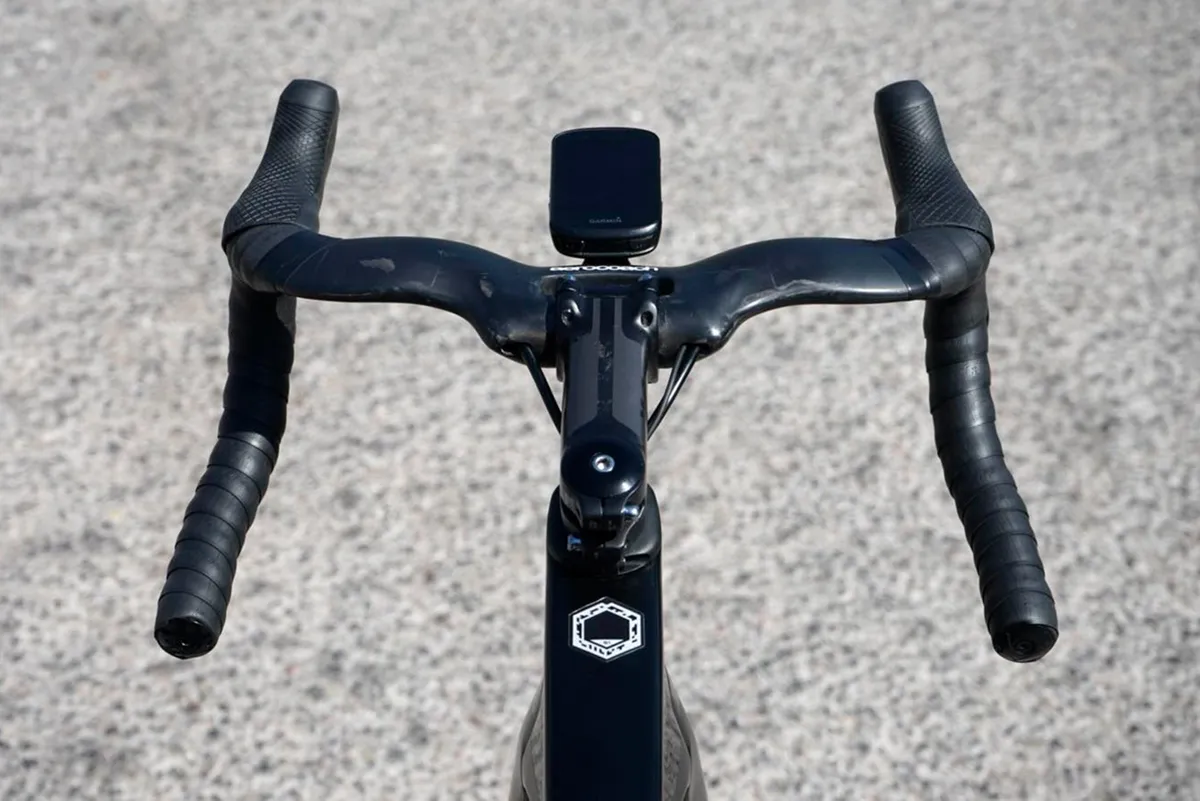
AeroCoach claims the Ornix handlebar can save a rider 4.7 watts versus ENVE’s SES aero handlebar (in its narrowest 35cm width), when riding at 45kph, and an enormous 21.4 watts compared to a standard, round 42cm-wide handlebar.
Of course, sponsorship restrictions, as well as the fact that some pro bikes (such as the Canyon Aeroad CFR) simply aren’t compatible with third-party handlebars, mean we might not see this exact handlebar used at the Tour anytime soon.
We wouldn’t be surprised if the big manufacturers take inspiration from progressive designs such as this one, though, especially if their sponsored teams are requesting similar designs.
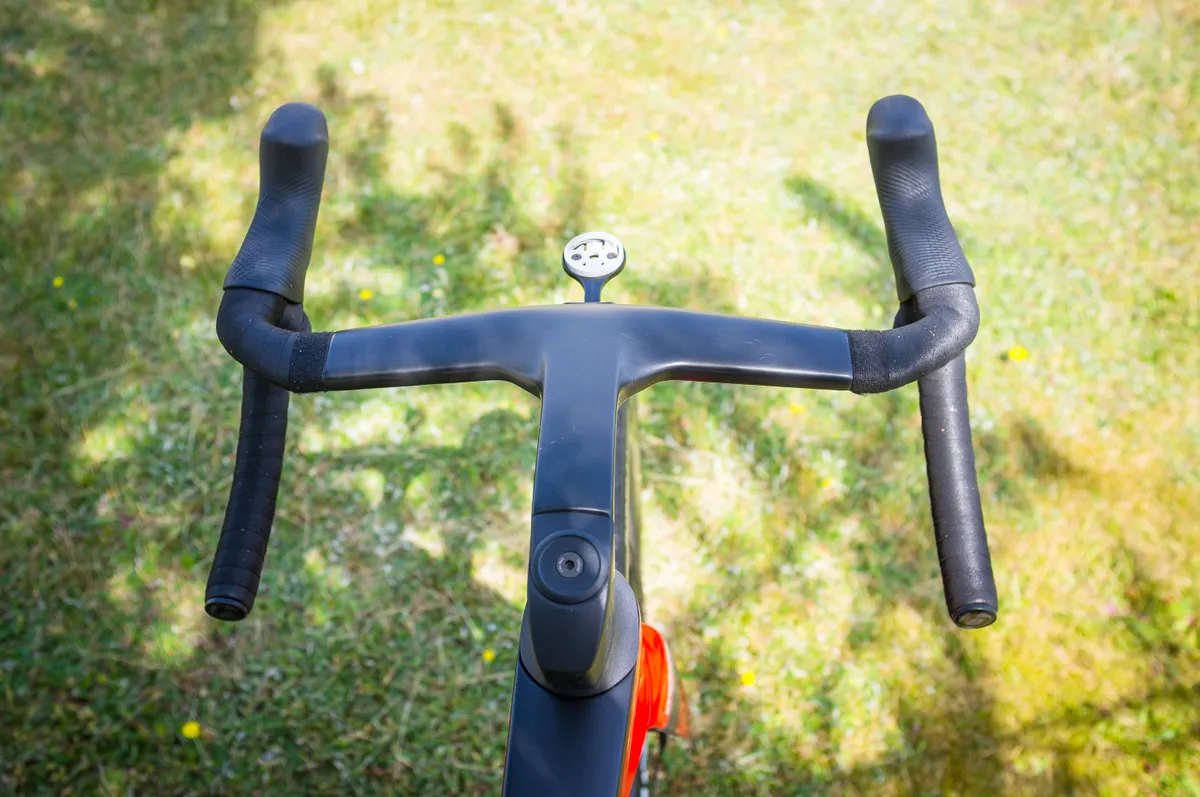
Trek, for example, adopted a flared handlebar for its latest Madone SLR aero road bike, and ENVE confirmed its new integrated handlebar was designed with input from Pogačar himself.
Presumably, if Tadej requests an even narrower setup for next year’s Tour, then he’ll get it.
